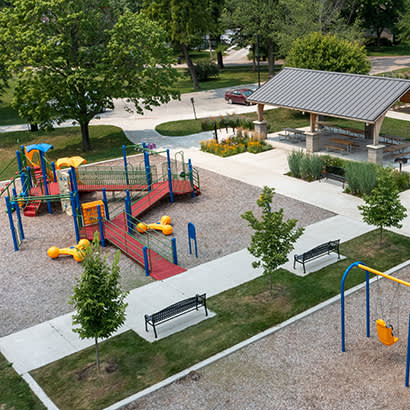
For an enhanced digital experience, read this story in the ezine.
A remarkable bipartisan agreement is sweeping all 50 states. There seems to be an undeniable connection between a community’s desirability, growth, and the expansion and improvement of parks and recreation and open space. From the Rockies to the Bayou and from the East Coast to the West Coast, investment in both new and existing parks, as well as new and existing open space, has never been higher.
Today’s thinking is not only to focus on the outdoors, but also to focus on indoor recreation offerings. Park districts nationwide are building, rebuilding and expanding both outdoor and “community center” indoor activities and programs as well. The connection that is perhaps least understood is the tie between parks, recreation and open space and the growth and stability of the community.
Economic Development
NRPA and the George Mason University Center for Regional Analysis explored the role that park amenities play in 21st century regional economic development. Their findings indicate that perceived quality of life runs directly parallel with high-quality park and recreation opportunities. All the following positives occur with the expansion or improvement of parks, recreation and open space opportunities:
- Companies/employers with high-quality businesses are attracted and/or retained.
- New residents are attracted.
- Investments in improving a community’s quality of life create a virtuous cycle. High-quality-of-life locations attract workers, which attract employers, which, in turn, attract even more investments and jobs.
The conclusion here is essentially the same one Kevin Costner’s character arrives at in Field of Dreams, “If you build it, they will come.”
Sadly, the 2017 NRPA report, Local Government Officials’ Perceptions of Parks and Recreation, revealed that many local officials “do not perceive [park and recreation] agencies as an important contributor to their biggest day-to-day concern: economic development.” This view is in direct conflict with the average park and recreation department’s views, and it’s in direct conflict with the mindset of proactive communities like the City of Iowa City, Iowa. Juli Seydell Johnson, City of Iowa City director of parks and recreation, says, “We are supported by the city council. The council has made a close tie with Iowa City’s parks and recreation goals and the city council’s goals.” Communities like the City of Iowa City are actively involved with their parks.
The Journal of Economic Geography 2010 in a report, titled “The Rural Growth Trifecta: Outdoor Amenities, Creative Class and Entrepreneurial Context,” notes that places with landscape (i.e., woods, water), climate (i.e., sunshine) and recreational appeal (i.e., tourist attractions) are more likely to grow through creative and entrepreneurial industries.
Modern parks and recreation is just as much about “open space” as it is about playground equipment, baseball diamonds and tennis courts. In fact, it’s becoming more about “open space” all the time.
Attracting and Retaining Residents
As part of the 2015 “Say Yes To Dallas” talent recruitment campaign, the Dallas Regional Chamber survey found that convenient access to parks, green space, and hike and bike trails was the second most important factor (behind the “quality of career opportunities”) for millennials when deciding where to live and work.
When we look at who’s doing the most to remain competitive in the business of retaining, attracting and, in short, competing to be seen as a desirable community in which to live and work, it’s striking how rapidly things change. What was once “enough” recreation and/or quality-of-life opportunities is now not even close. What in the past was a disadvantage, such as the small size of a community, is now an advantage. The current younger generations put quality of life and recreation at the top of their list. Therefore, any community that is not fully engaged in modern park and recreation development or rehabilitation is missing its opportunity to retain existing residents and/or to attract new ones.
Research shows that park and recreation departments partner with various economic development organizations as well. An NRPA case study of Roanoke, Virginia’s effort to establish themselves as an outdoor recreation destination is an excellent case in point. In a collaborative partnership between economic developers, parks and recreation, and private-sector leaders, Roanoke became a center for outdoor activities/recreation, and these days, many people want to live in or near places that are a recognized center for outdoor recreation.
Developing Partnerships
How do communities continue to be desirable to both existing and new residents while facing the pressures that come with growth and competition? The key is a history of partnership between those involved with the development and preservation of parks, recreation and open space and organizations involved in economic development. It’s a formula that successful communities have been engaging in for decades, and it rests on their shared values of recreation, quality of life, and local/regional growth and economic stability. It is vital that cities continue to plan and build for the future, and their efforts will be rewarded. Popular communities build park and recreation opportunities in advance of the growth and continue to add new and different levels of service to their offerings every year.
Mark Sheldon is Vice President of Operations at Romtec, Inc.

